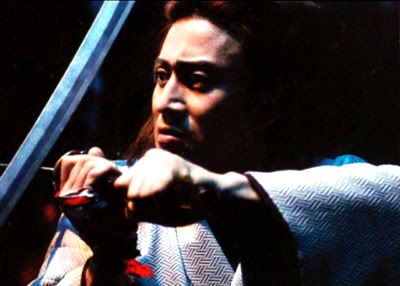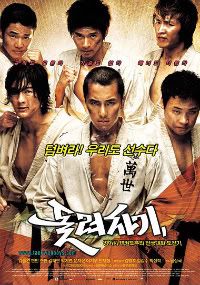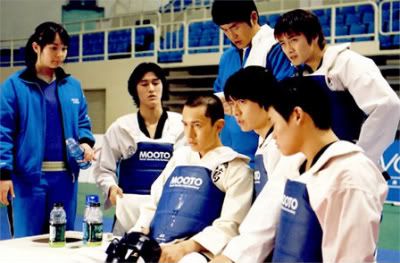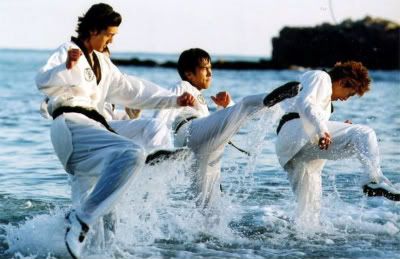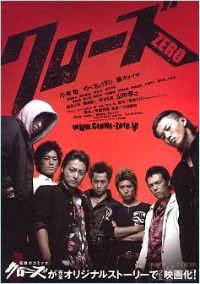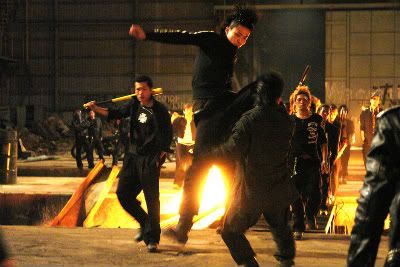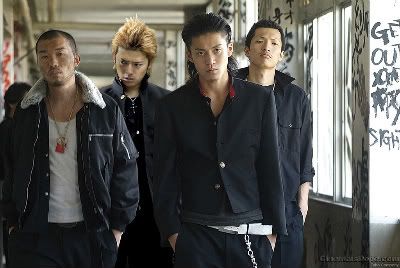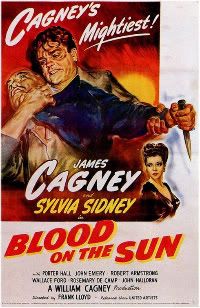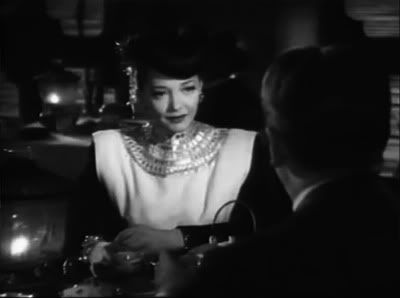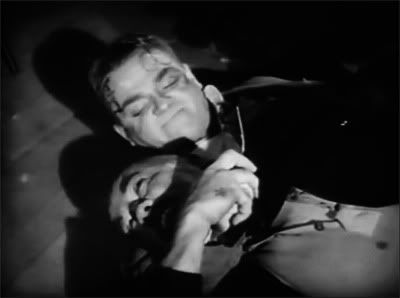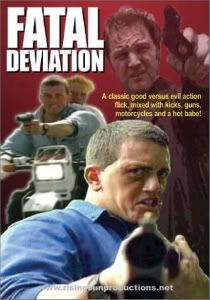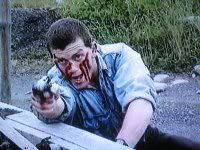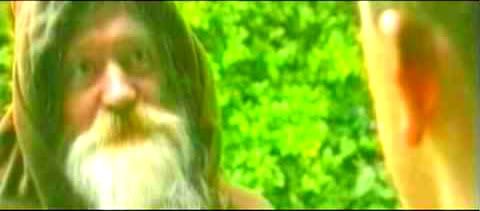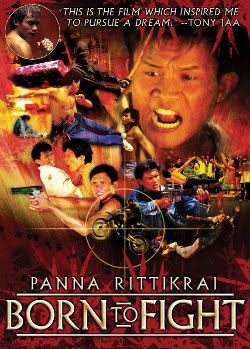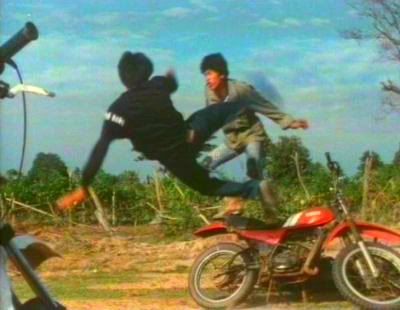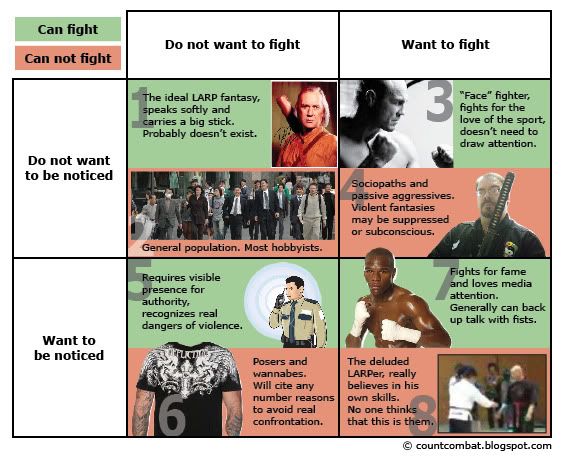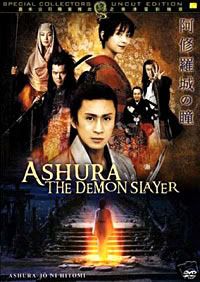
Ashura-jo no Hitomi
“Ashura,” aka “Blood Gets in Your Eyes”
Japan, 2005
Genre: Action, Fantasy
119 minutes
http://www.imdb.com/title/tt0459744/
Based on a modern kabuki stage play, Ashura is a tale of romance, treachery, and violence. It is a tale about a demon-slayer who runs from his past, only to discover that it has all caught up with him.
Yojiro Takita directs this adaptation of the hit kabuki play, closely following the original story in the film. This works both for and against him at times, which begs the question of his intent for the adaptation. Driven by very beautiful sets and an outstanding score, the actual performances on screen are hammed to a point of absurdity. I imagine that Takita was looking for a larger-than-life story of epic proportions, but the result ends up feeling forced. The characters are written to have depth and sympathy, but end up sounding completely different from one scene to the next, lacking a basic consistency of personality that allows the audience to identify with them. Somegoro Ichikawa’s hero is genuinely charming at times, but overall feels like he’s just playing a cardboard cutout of a heroic stereotype. While such performances might work on stage (especially kabuki, which is generally highly stylized), the film adaptation makes it more cheesy than symbolic.
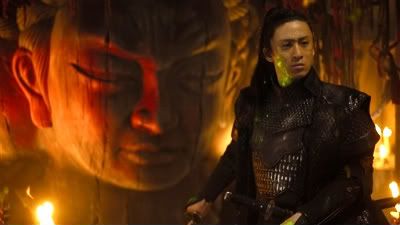
The production of the film is certainly impressive. As mentioned, the soundtrack is superb, adding life to many scenes that would otherwise have no redeeming value. The sets reveal rather clearly the stage roots of the piece, but this itself is not a fault. Many successful films make use of stylized sets or stage-style locations. However, it should be noted that the decision to do so makes the film feel very cramped, even when using exterior shots. It lacks the sense of wonder or majesty that can really only be achieved by shooting on location. Ashura also makes liberal use of digital effects to reinforce the supernatural fantasy aspects of the story. Stage performances make do with practical effects, and maintain a sense of illusion when doing so. Films, on the other hand, lose that quality with computer-generated imagery, especially with the over-the-top style used by this movie. The monsters seem intentionally fake and cartoonish, spewing fluorescent green blood upon their death. Marching forward with all the subtlety of neon rhinoceros, the look of the film is excessive and gaudy.
Selling itself as a swashbuckling adventure, the film’s fight scenes aren’t terribly done, especially when compared to other Japanese action movies like High-Kick Girl or Shinobi. Still, when looking at the fast-paced and hard-hitting choreography coming from countries from around the world, the fights feel stiff and awkward. Like the rest of the film, Ashura chooses style over substance, leaving the audience with a product indistinguishable from the sea of other C-list action movies in the video store.
